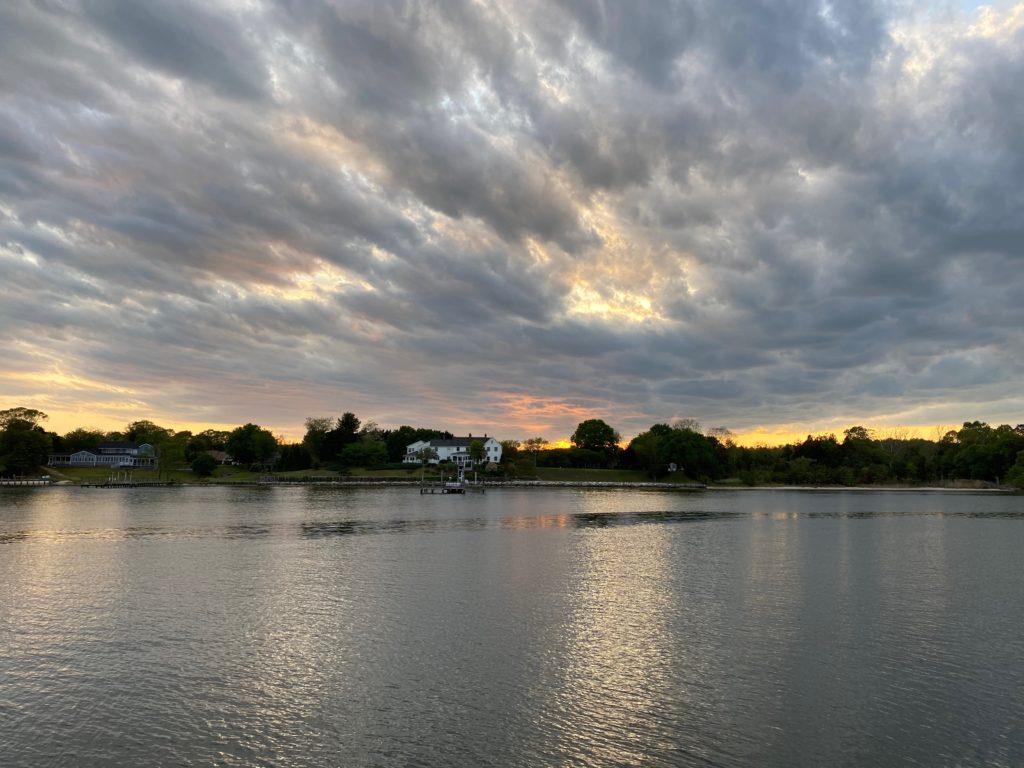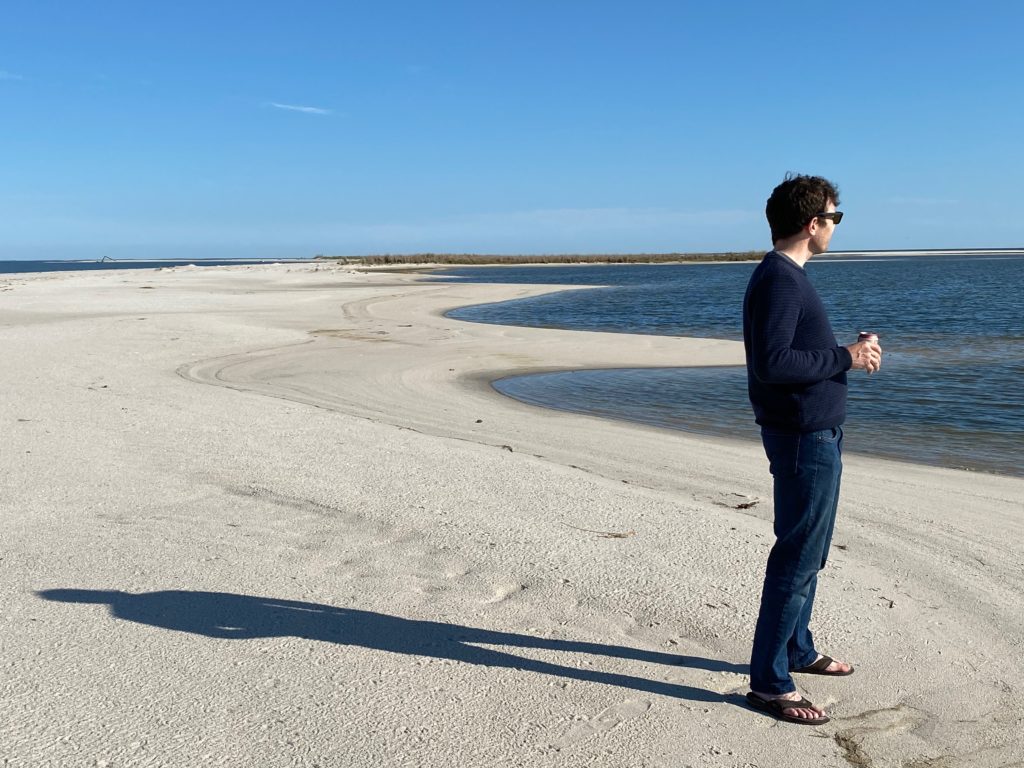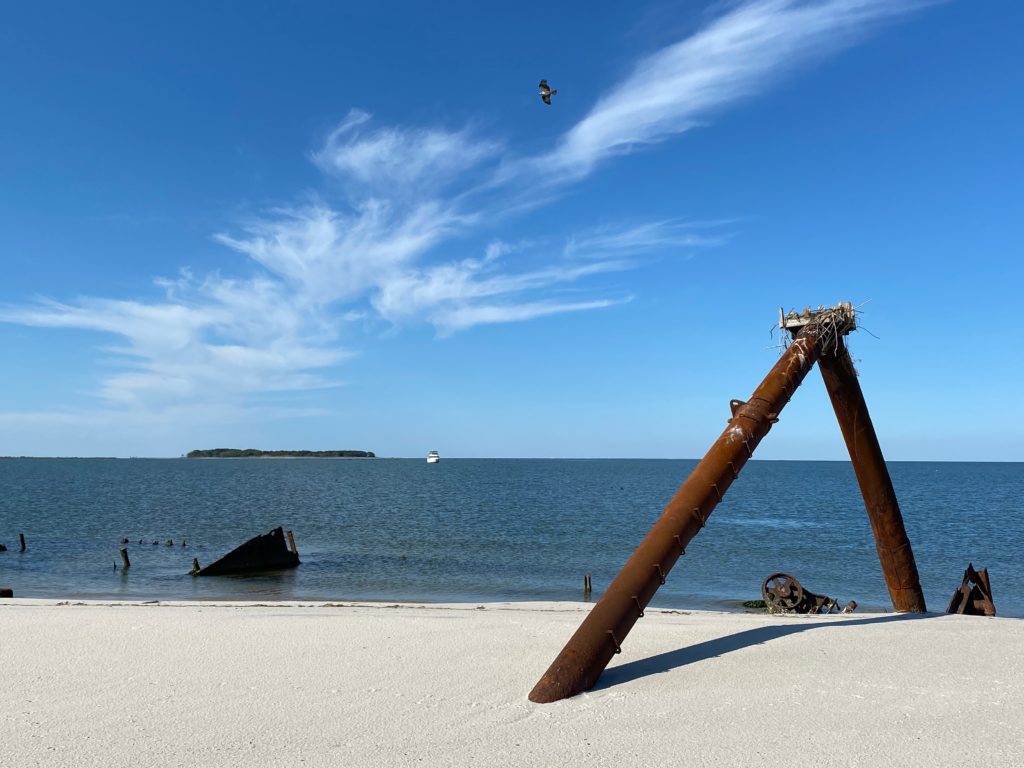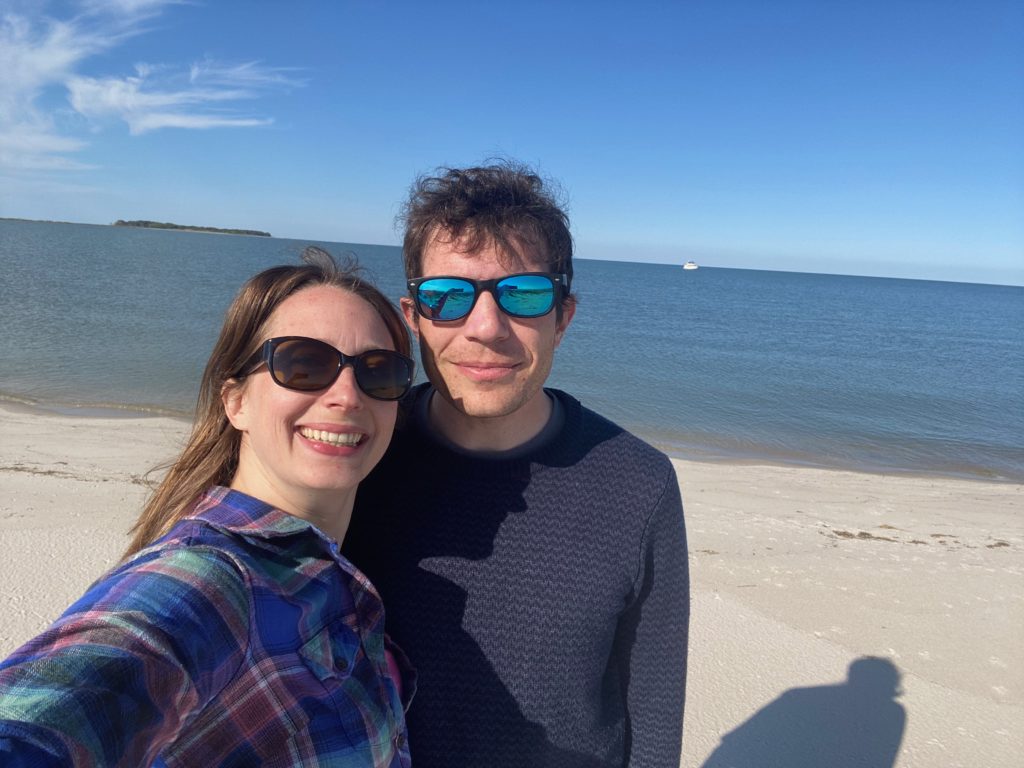
The next morning, about 30 mins after I woke up, I heard a horn outside of the boat and went out to investigate. A Norfolk Fire Department boat was coming over to see if everything was alright. Perhaps not too many people anchor in that spot? It was also pretty windy - so maybe they thought we were in trouble? Despite the wind, we seemed to have a good hold and our new batteries were not expected at our next marina for another day, so we decided to hang out for an extra day in this spot.
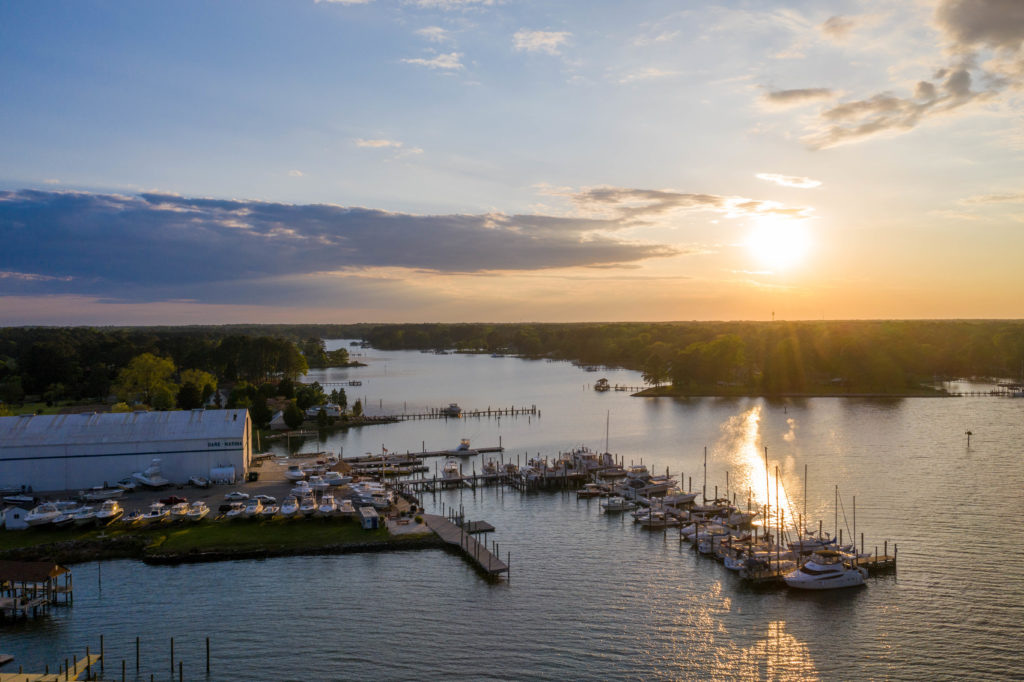
Next up, we cruised to Yorktown and tied up at Dare Marina. This was the only marina that was open to transients in Yorktown, and was more of a boating service marina than a standard marina (i.e. no laundry facilities!). We received the shipment of our 8 new batteries, and David spent the next two days installing them.
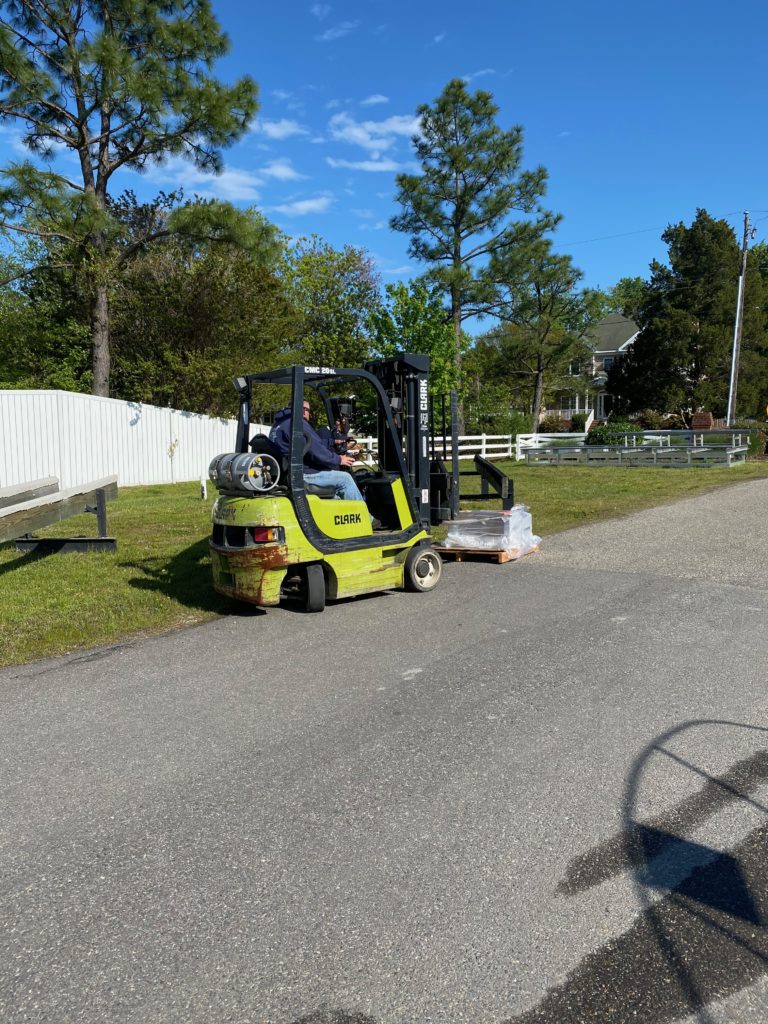
The marina helped us out with their forklift! 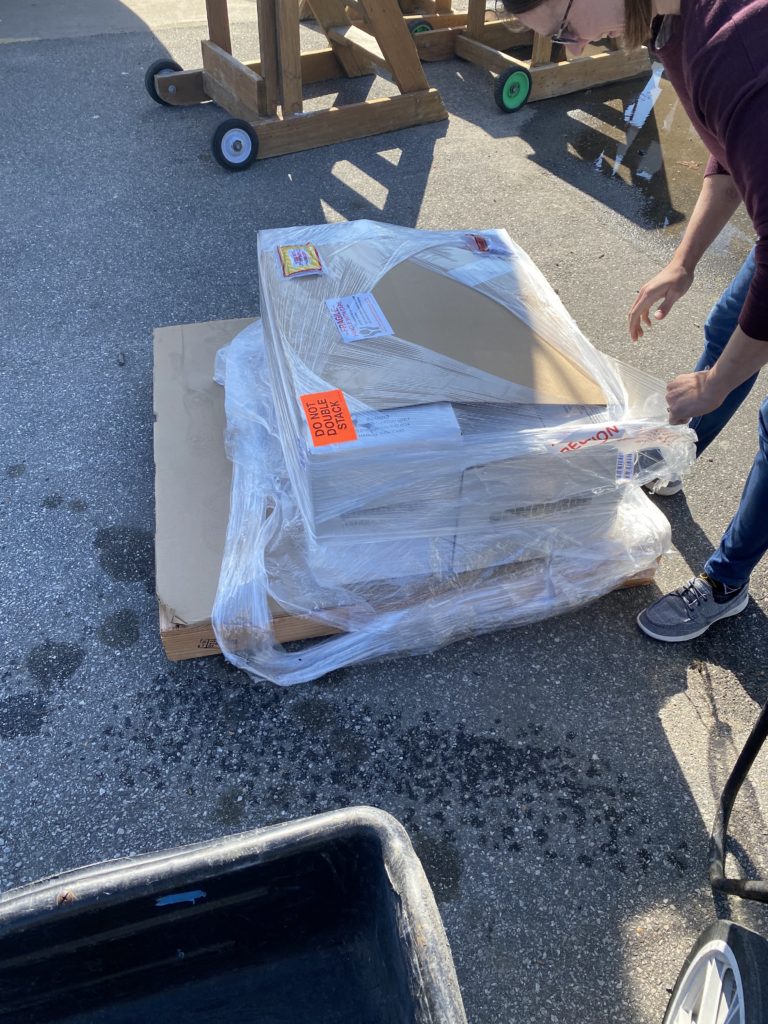
Unwrapping 800 lbs of batteries to bring to the boat 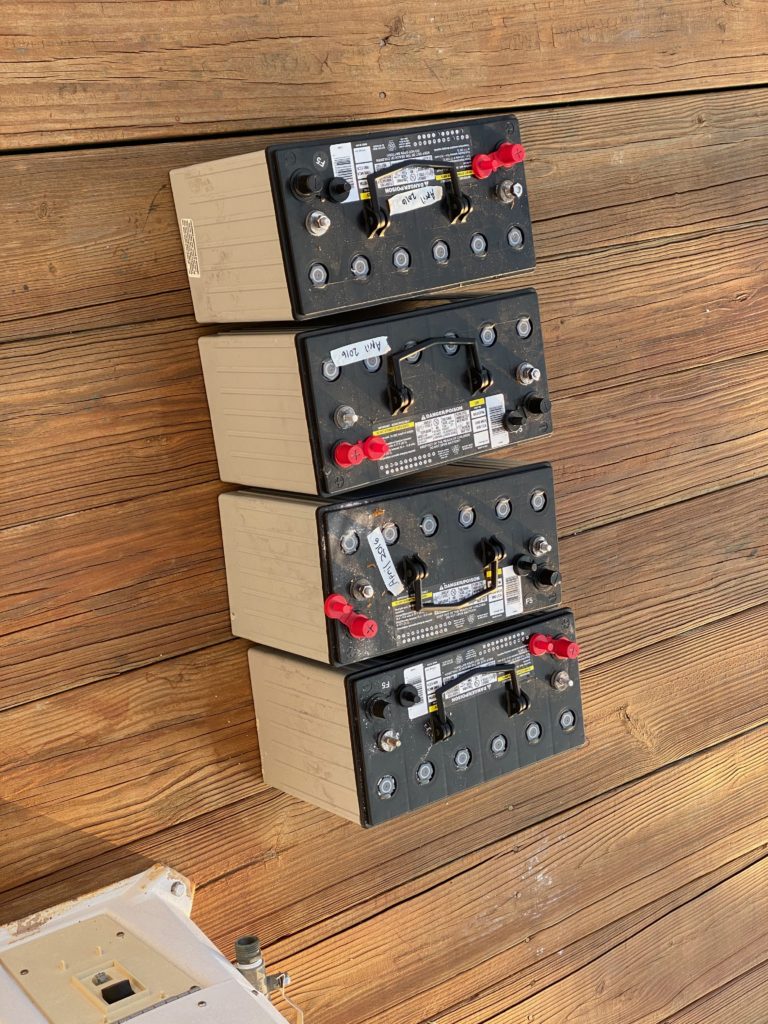
The start/thruster batteries, removed and on the dock
We knew there was an incoming wind storm on Thursday, but it was supposed to die down by the afternoon, so our plan was to head out to our next destination (a marina with laundry!) after work. The afternoon was so windy and it was still raining around 3pm, so we decided to extend our stay for one more night. As it turns out, everything did die down, and by about 4:30 it was extremely calm!
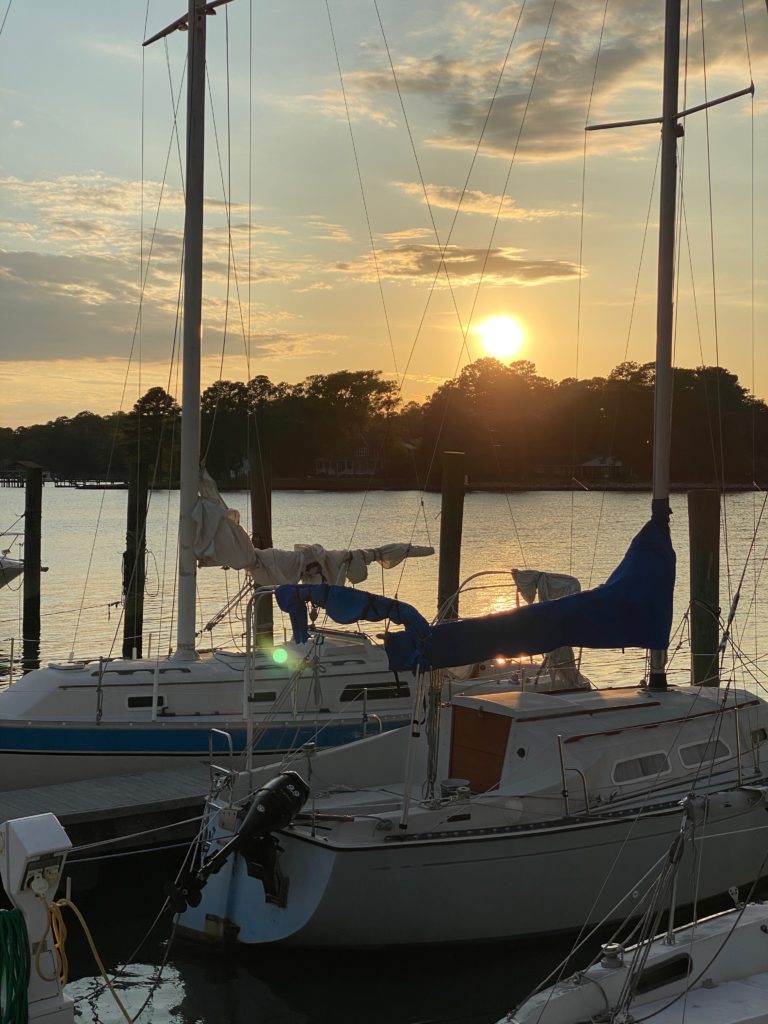
The next morning, we headed up to Deltaville, a stop that we basically made for the sole purpose of doing laundry, which we hadn't had access to in several weeks at this point. We had an uneventful stay in the marina -- so uneventful we apparently took no pictures of anything. Freshly laundered, we headed out again the next morning.
Next up, we decided to head to the east side of the Chesapeake for the weekend. Our crossing was a little choppy and required dodging literally thousands of crab pots. We knew that more wind was coming over night, so we chose a spot just south of Tangier Island, which we hoped would afford some protection. As it turns out, there are not that many anchorage spots around this cluster of islands, without going several miles up side rivers (which delays our ultimate progress north), so we picked the theoretical best of the available options. After much hemming and hawing about the situation, we decided to call it good here for the night and investigated our activity options.
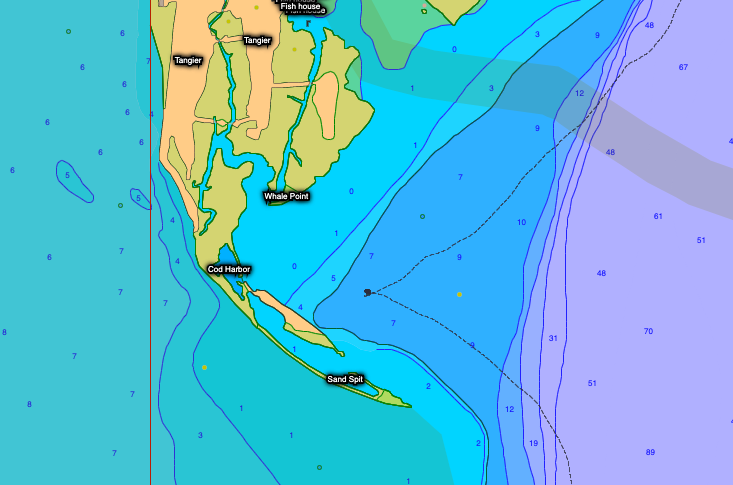
Tangier Island is a bit of a sad story. In the 1770s it started as a farming community, and later shifted to oyster/crab fishing as the primary resource. It started out not much above sea level, and global warming has already reduced the available land mass by 67%. In another 50 years, it will essentially be entirely under water and will need to be abandoned. Ironically, the isolated community is heavily bible-thumping and climate-denying, but still laden with interesting history.
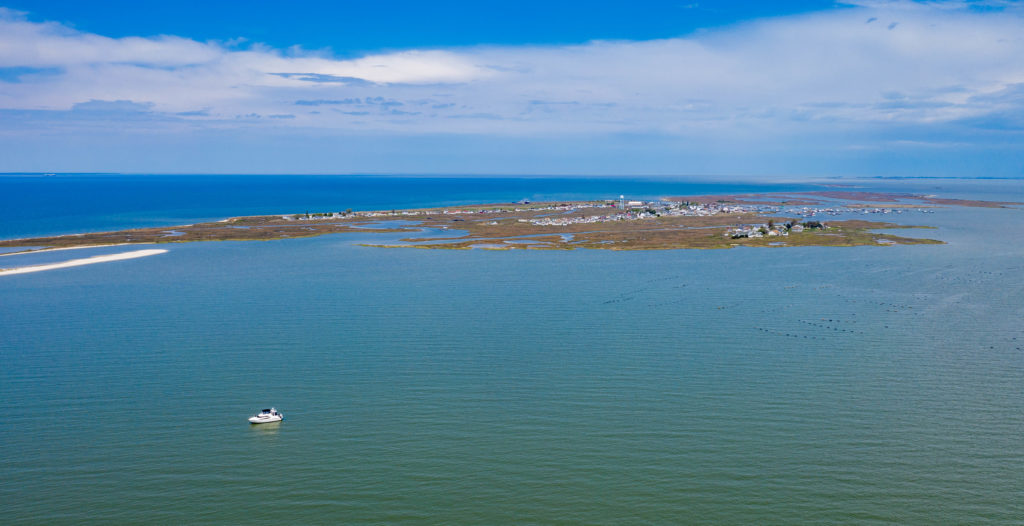
The island's facebook page has asked visitors to stay away from the town due to lack of medical care available for Coronavirus, so we decided to not even pick up takeout from one of the local restaurants. Instead, we just put the dingy down to head over to the isolated white sandy beach south of town - our first real beach of the trip!!
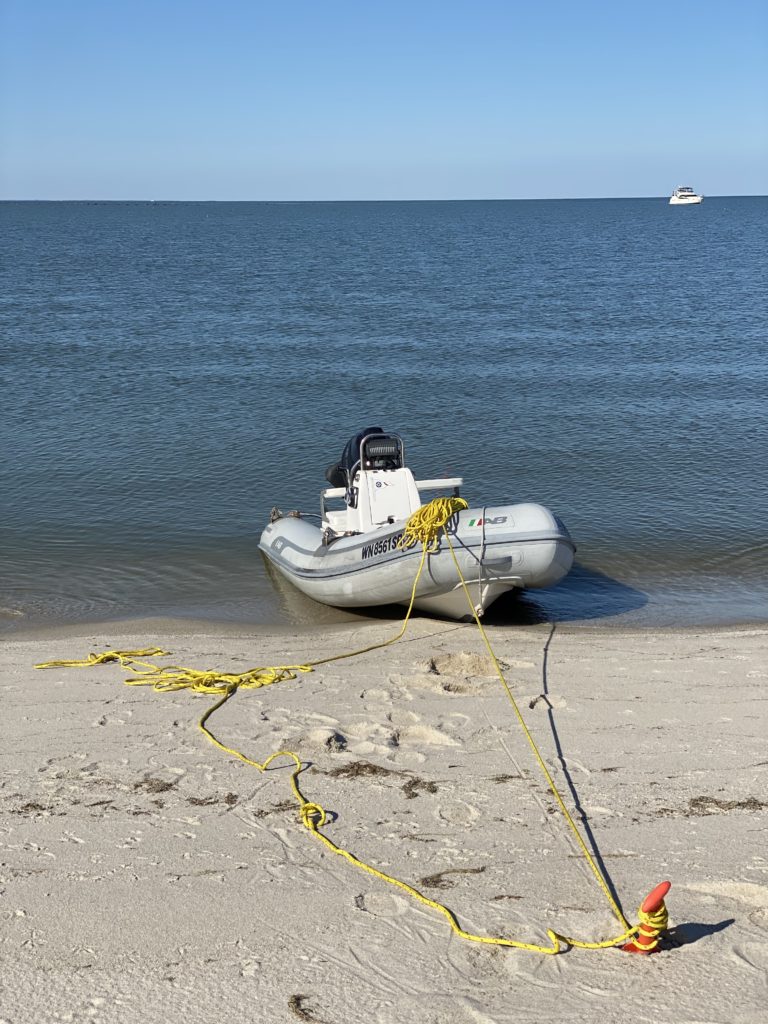
When taking the dingy to land, we use a bungee anchor system, where you boat close to shore, and toss an anchor off the back of the boat. This anchor is on a stretchy cord, so it allows you to continue to motor your way all the way into shore to hop off the bow of the boat (or at lease use inertia). We then have another long line tied to the bow. Once off the boat, you let the bungee cord retract so that the dingy is afloat (saves the bottom of the boat because you are not constantly beaching it in the waves for hours) and tie the bow line to something on shore so you can retrieve it. When you want to return to the dingy, you pull in on the bow line, stretching the bungee chain, hop on the boat, let the bungee retract again, pull anchor and you are off.
Now, I am explaining this because we knew we wouldn't be on the beach for too long (Tangier Island was discouraging visitors to the town, though nothing was officially closed), the beach wasn't huge, and the tide range is small, so rather than tying off the bow line to something solid, we dug an oar into the sand and wrapped the bow line around it a couple of times. We then went for a walk along the beach.
It was a nice day, so we decided to walk the entire beach, which took a while longer than anticipated. On the far south end of the beach, we looked back up and noticed a small white dinghy no longer on the beach, so we started working our way back. As the tide continued to rise, the dinghy had un-beached itself, and the oar had come free and taken the bowline with it, so now our dingy was happily anchored 50 feet off the shore in 3 feet of water. I had to swim out to the dingy to grab the line and bring the boat back to shore! Ooops. I guess we won't be so lazy next time!
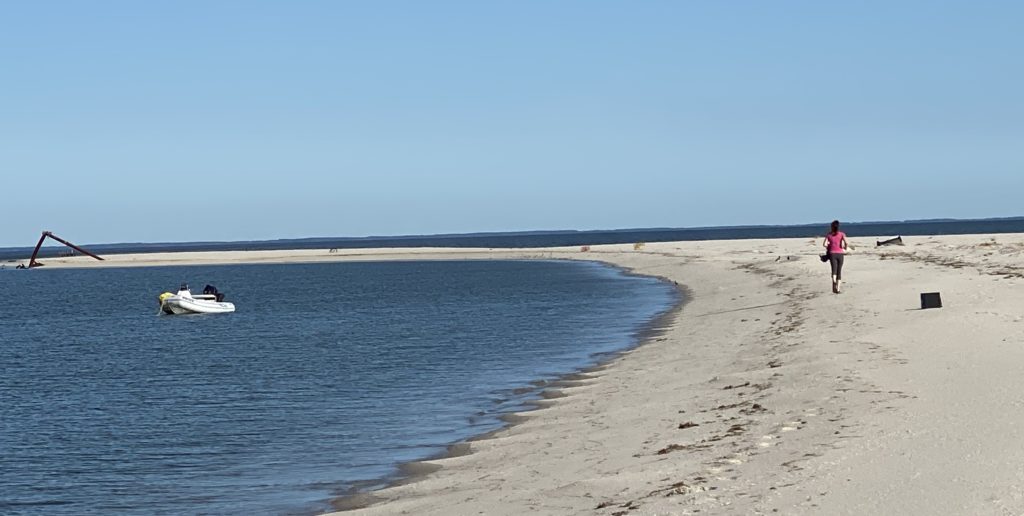
We returned to the boat and hunkered down for the evening, prepping for the overnight wind storm. It turned out to be a doozy - 25kt winds and constant rocking all night. It was probably the worst night of waves we've had on the boat before. Neither of us slept well in the irregular and heavy rocking, though the anchor held strong.
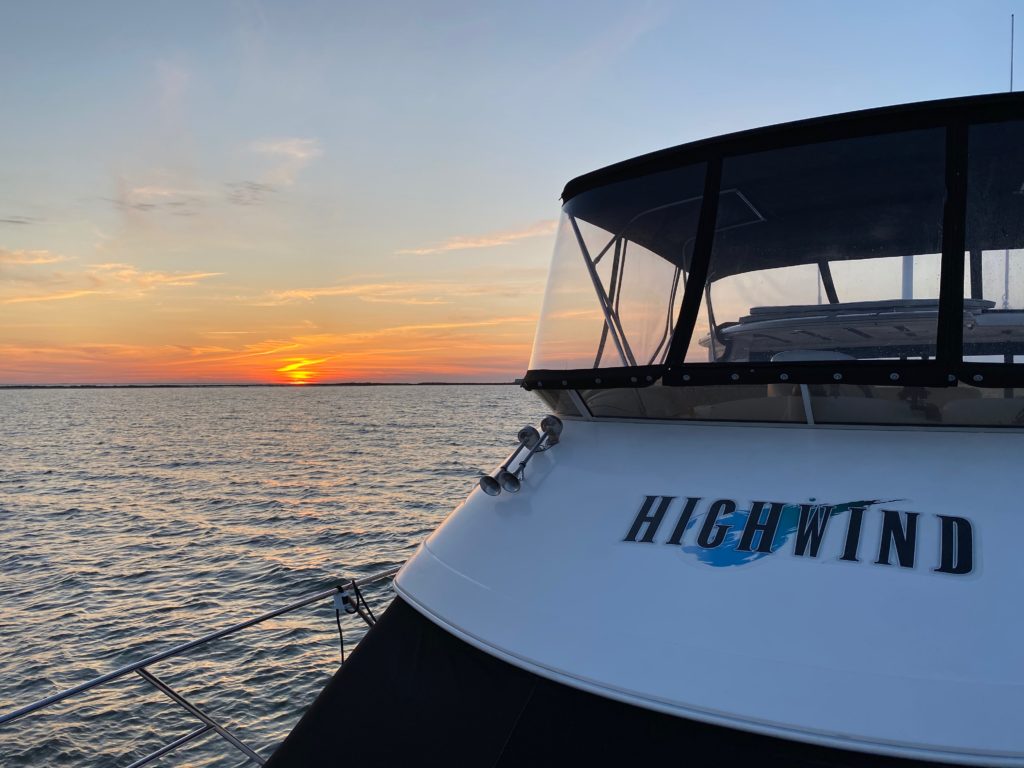
Our plan the next day was to head a ways north to the Honga River, and anchor in one more spot on the east side of the Chesapeake before heading back to the west side. As we approached the new anchorage, I did a quick check for the winds overnight and the following morning for the crossing. PredictWind (a wind app we use) was predicting headwinds up to 10mph in the morning, which is likely to add up to a bunch of chop crossing a body of water as wide as the Chesapeake. Right then, there was zero wind and we still had a few more hours of daylight, so we made a game-time decision to turn around and head across the Chesapeake. The crossing was glassy and the setting sun through the clouds made the best of a 1.5hr extension of what had already been a decent length cruise that day.
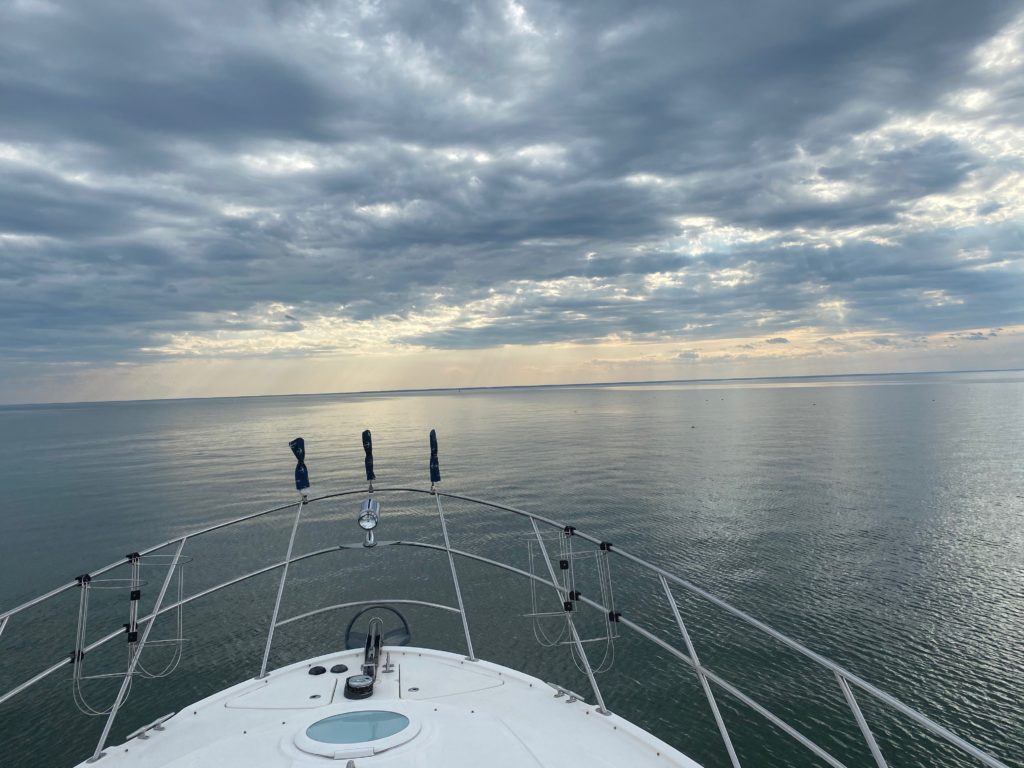
We are now safely anchored near the mouth of the Patuxent River sitting in about 10mph winds that picked up after nightfall, so I guess we made the right decision! We are pretty well protected, so we are not being tossed around too much.
